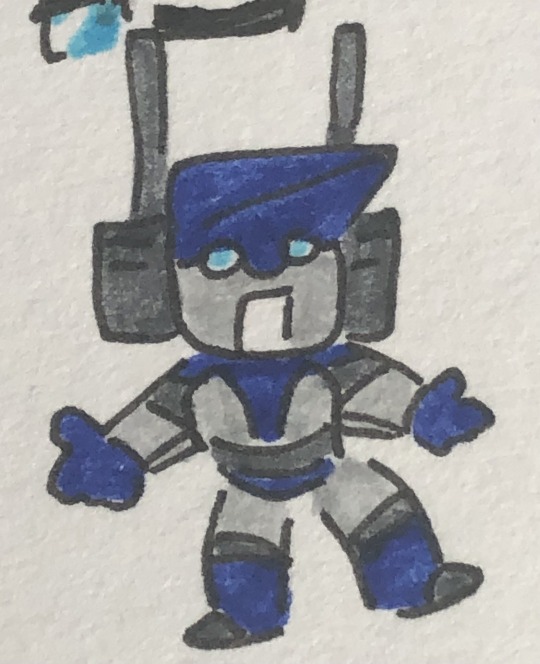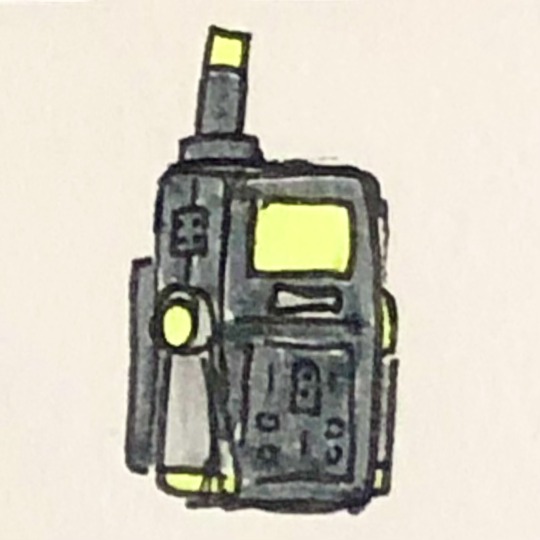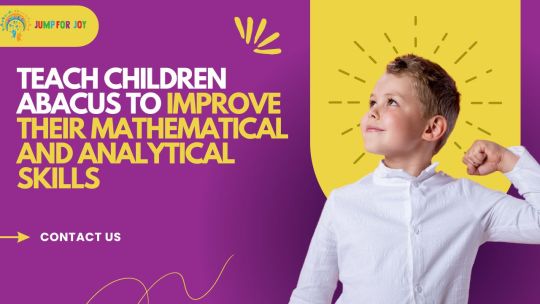#phonics for kids
Text
The Use of Phonics in Bilingual and Multilingual Classrooms
Bilingual and multilingual classrooms are settings where students and teachers use more than one language for communication and learning. Bilingual and multilingual classrooms can have different models and goals, such as dual language, bilingual, or translanguaging programs. In these classrooms, students can benefit from learning phonics in both their home language and English, as well as transferring their phonics knowledge across languages.
Here are some benefits and challenges of using phonics in bilingual and multilingual classrooms, as well as some strategies and resources for teachers.
Benefits of Using Phonics in Bilingual and Multilingual Classrooms
Phonics can help students develop phonemic awareness, which is the ability to hear, identify, and manipulate the individual sounds in spoken words. Phonemic awareness is a crucial skill for reading, as it allows students to apply their knowledge of phonics to decode unfamiliar words. Phonemic awareness can be developed in any language, and it can transfer across languages that share similar sounds.
Phonics can help students learn the alphabetic principle, which is the understanding that letters represent sounds in written words. The alphabetic principle can also be learned in any language, and it can transfer across languages that use the same or similar writing systems. For example, students who learn the letter-sound correspondences in Spanish can use them to read and write English words that have the same or similar spellings, such as cat/gato or sun/sol.
Phonics can help students develop vocabulary and comprehension skills in both languages. Vocabulary is the set of words that a person knows and uses. Comprehension is the ability to understand and interpret what they read. Vocabulary and comprehension depend on both decoding skills (using phonics) and linguistic skills (using grammar and meaning). By learning phonics in both languages, students can access more words and texts in each language, as well as make connections between languages.
Challenges of Using Phonics in Bilingual and Multilingual Classrooms
Phonics can be challenging for students who speak languages that have different sounds or writing systems from English. For example, students who speak Mandarin Chinese may have difficulty with some English sounds that do not exist in their language, such as /th/ or /r/. Students who speak Arabic may have difficulty with some English letters that do not exist in their writing system, such as p or v. Teachers need to be aware of these differences and provide explicit instruction and practice for students to master them.
Phonics can be challenging for students who speak languages that have different spelling rules or patterns from English. For example, students who speak French may have difficulty with some English spellings that do not follow the same rules or patterns as their language, such as silent letters (e.g., knife) or irregular spellings (e.g., said). Teachers need to be aware of these differences and provide explicit instruction and practice for students to learn them.
Phonics can be challenging for teachers who need to balance the use of two or more languages in their instruction. Teachers need to be strategic in their use of the languages, such as choosing which language to use for which purpose, when to switch languages, and how to scaffold students’ learning in each language. Teachers also need to coordinate their instruction across languages, such as aligning the phonics skills and content that they teach in each language.
Strategies and Resources for Using Phonics in Bilingual and Multilingual Classrooms
Teachers can use a systematic and explicit approach to teach phonics in both languages. A systematic approach means that teachers follow a logical sequence of phonics skills from simple to complex, such as starting with short vowels and consonants and moving on to long vowels and consonant blends. An explicit approach means that teachers teach each phonics skill directly and clearly, such as explaining the sound-spelling relationship, modeling how to read and write words with that skill, and providing guided practice and feedback.
Teachers can use a cross-linguistic approach to teach phonics across languages. A cross-linguistic approach means that teachers make connections between the languages that students speak and learn, such as highlighting the similarities and differences between the sounds and spellings of words in each language, using cognates (words that have the same or similar meaning and form across languages) to build vocabulary and comprehension, and using translanguaging (the flexible use of multiple languages) to support communication and learning.
Teachers can use a variety of activities and materials to teach phonics in both languages. Some examples of activities and materials are:
Sound boxes: a visual tool that helps students segment and blend sounds in words. They consist of a long rectangle divided into squares that represent the number of sounds in a word. For example, the word cat has three sounds and three boxes: /k/ /a/ /t/. To use sound boxes for phonics, write the word on a board or a card and draw the corresponding sound boxes below it. Then, ask students to say each sound in the word as they point to each box. Next, ask them to write each letter or letter combination that makes each sound in each box. Finally, ask them to say the whole word as they slide their finger under the boxes.
Flashcards: a simple and effective way to review phonics skills with students. They can be used for individual or group practice, as well as for games and activities. To make flashcards for phonics, write each word or letter-sound correspondence on a card or use pre-made cards from online sources. To use flashcards for phonics, show each card to a student or a group of students and ask them to read the word or say the sound aloud. If they read it correctly, praise them and move on to the next card. If they read it incorrectly or hesitate for more than three seconds, tell them the correct word or sound and ask them to repeat it. Then put the card aside and review it again later.
Books or texts: a rich and authentic way to expose students to phonics skills in both languages. Teachers can select books or texts that contain words with the phonics skills that they are teaching, such as short vowels, long vowels, consonant blends, etc. Teachers can also select books or texts that are bilingual or multilingual, such as books that have the same story in two languages or texts that mix languages. Teachers can use books or texts for phonics instruction by:
Reading aloud: reading the book or text aloud to students and drawing their attention to the words with the phonics skills that they are learning, such as asking them to identify the sounds or spellings of those words.
Shared reading: reading the book or text together with students and inviting them to join in reading the words with the phonics skills that they are learning, such as asking them to point to those words or read them aloud.
Independent reading: allowing students to read the book or text on their own or with a partner and encouraging them to practice the phonics skills that they are learning, such as asking them to find those words or write them down.
Using phonics in bilingual and multilingual classrooms can help students develop their reading and writing skills in both their home language and English, as well as enhance their bilingualism and multilingualism. Phonics is not only a skill, but also a resource that students can use to access more languages and literacies.
If you want your kids to learn phonics must visit e-Tuitions. e-Tuitions offers the best online phonics classes for kids. Learn from experts and experienced teachers who use fun and interactive methods to teach phonics. Choose from different phonics teaching methods to suit your child’s needs and preferences. Book free demo class today and join e-Tuitions to help your child fly with phonics!
2 notes
·
View notes
Text
youtube
Title: Spelling & Phonics Game for Kids: Our Honest Review. Description: In this video, we review a fun and educational spelling and phonics game for kids. We'll show you how the game works, share our thoughts on its effectiveness, and give you an honest review. If you're looking for a way to help your child improve their spelling and phonics skills, this game might be just what you need!
#spelling#phonics#kids game lab tv#phonics games for kids#spelling games#Free spelling games for kids#Spelling games for 8 Year Olds#phonics game#learning#phonics for kids#kids#kids game review#Game for Kids#Honest Review#Spelling & Phonics Game#Spelling & Phonics Game for Kids#alphabet#kindergarten#abc#learn to read#letter sounds#learn english#reading#preschool#spelling & phonics: kids games#Spelling games for the classroom#Spelling games for Grade 3#Youtube
0 notes
Text
You ever sub for a class and you’re like who tf is your normal teacher
Show and tell in kindergarten, one girl brings like her nail painting set and so some girls are playing with some of the nail stickers. They want to share with me too so I take them. Some of the boys are looking on from across the room and one of them is like “boys can do that??” and I’m like “well I think people should do whatever makes them happy, don’t you?” and suddenly they all go rushing over
like I’m so sorry your normal teacher doesn’t seem to let you explore life outside of rigid gender roles?? At a school that is supposed to be super progressive about all that??
#also these kids SUCK at phonics they’re supposed to be in first grade in two months but their teacher only seems to care about spelling#gross. though she doesn’t seem to care about period usage either interesting. no shade no shade#anyway it was a great class and they behaved better than my third graders#teacherblogging
10 notes
·
View notes
Text
This here is my sentinjazz fankid: Whistle
(later becomes Phonic Prime)


Whistle is very witty, loves to trick others, and being an all around menace. Sentinel spoiled him too much and Jazz couldn’t bring himself to say no in most scenarios. Whistle got his name from his loud/high pitch audio powers.
He later becomes Phonic Prime and humbles out SO MUCH. A complete 180 into a polite and modest young man <3 keeping his tricky mind of course


And this is his loyal pet while growing up: Bell
her tail is an antenna that has a direct link to Whistle/Phonic Prime. Because they’re BEST FRIENDS :D
#robot boy and his robot doggy#I don’t have a set story for them because I have so many unfinished Sentijazz AUs and ideas#sometimes Jazz is a single dad and Sentinel is very insistent on being the second father figure#sometimes they’re both the dads and things are chill#sometimes Whistle’s dad is Optimus Prime… things happen#the point is I have a Sentijazz kid and he has a dog#tfa#transformers animated#tfa whistle#tfa phonic prime#tfa bell#sentijazz#fankid#my ocs
10 notes
·
View notes
Text

Hello Kitty: Hide-and-Seek (2007)
Story: Quinlan B. Lee -- Art: Sachiho Hino





#hello kitty#hide and seek#sanrio#2000s#00s#leveled books#Quinlan B Lee#Sachiho Hino#picture books#kid books#children's books#kidlit#phonics
7 notes
·
View notes
Text
The more I learn about the “reading wars,” the more baffled I am. I’ve been listening to the “Sold a Story” podcast, and I do not understand how ditching phonics ever became a thing. That is how our language functions, we have an alphabet for a REASON. Only being able to read prior memorized words is so constraining. You should be using context clues for the *meanings* of words, not to take a wild stab at what the word might be. No wonder illiteracy has risen, this screws over kids so badly.
10 notes
·
View notes
Text
I'm not going to get mad about the post about teaching kids to read I have better things to do.
#literacy rates are at a scary low but the solution is not.... one size fits all phonics curriculums that you ''force'' kids to do#guy with veins popping out jpeg.
16 notes
·
View notes
Text
lots of talk rn about how fucked up the US education system is rn (like "8th graders not knowing the first 7 letters of the alphabet regardless of income/ability" fucked up) w lots of reasons given like covid, lack of parent engagement, "kids these days being lazy", etc. and while i definitely think at least the first two have impact on the situation
mostly i'm just like....... all of these things people are pointing out is problems that low SES teachers & students have been pointing out for decades. these are problems that students have been struggling with for decades in low SES schools. and now that it's applying to rich white kids too people are talking about it. but it has always been a fundamental flaw and issue in our schooling system. and the biggest issue here is, imo, that we are living in late stage capitalism & our school system was NOT built to handle a single thing going on rn. just like it wasn't built for lower-class students to thrive. the problem is now most households and schools are facing the same issues these lower SES households and schools have always faced.
but it's just a little wild bc for years the concerns and problems that teachers and students in lower SES schools have brought up have been routinely ignored and brushed aside and these students just got pushed along and the schools kept getting less funding and no one bothered to try and fix it so now we have a crisis bc it's happening everywhere
#like unfortunately this is what happens when you have large class sizes to a single teacher#when you lack funding#when you stop teaching phonics and only rely on teaching kids sight words#when you do not offer enough parental education and support/after school programs#when you rely on 'no child left behind' and do not bother to catch students up and just push them to the next grade#when no one stops and catches learning deficits early so now you have middle/hs teachers having to teach basics they were not trained to#when you do not pay teachers enough and overwork them and also do not train them on diversity or classroom management#and these are aaaall problems that have been present for decades now. but covid and late stage capitalism have made them everyone's problem#so it's harder to ignore now
12 notes
·
View notes
Text
wdym schools arent teach phonics anymore🧍🏻♀️🧍🏻♀️🧍🏻♀️🧍🏻♀️
#this is what i wake up to#phonics were my favorite part of word learning bro😭#what the fuck is a sight word bro😭😭#like no wonder kids cant read tf
7 notes
·
View notes
Text
Fun and Engaging Phonics Activities
Phonics is a method of teaching reading that focuses on the relationship between letters and sounds. Phonics helps children learn to decode words by breaking them down into their smallest units of sound, called phonemes, and matching them with the corresponding letters or letter combinations, called graphemes.
Phonics can be fun and engaging for children if they are taught with creative and interactive activities that appeal to their senses, interests, and learning styles. Here are some examples of phonics activities that you can try with your children at home or in the classroom:
Sound Bingo: This is a game that helps children practice identifying and matching sounds with letters. You will need a set of bingo cards with different letters or letter combinations on them, and a set of cards or tokens with pictures of words that start or end with those letters or letter combinations. You can also use an online tool to generate the bingo cards and the tokens. To play the game, you will call out a word from the tokens, such as “cat”, and the children will have to find the letter or letter combination that makes the sound /k/ on their bingo cards, such as “c” or “k”. The first child to complete a row, column, or diagonal on their bingo card wins the game.
Phonics Hopscotch: This is a game that helps children practice blending sounds to read words. You will need a chalk or tape to draw a hopscotch grid on the floor, and some cards with words that are made up of two or three phonemes, such as “dog”, “sun”, or “fish”. You can also use an online tool to generate the words. To play the game, you will place a card with a word on each square of the hopscotch grid. The children will have to hop on each square and say the sounds and then the word as they land on it. For example, if they land on “dog”, they will say /d/, /o/, /g/, “dog”. You can make the game more challenging by using words with more phonemes or silent letters, such as “star”, “jump”, or “knight”.
Phonics Treasure Hunt: This is a game that helps children practice segmenting sounds to spell words. You will need some small objects that represent words that are made up of two or three phonemes, such as a toy car, a hat, or a ring. You will also need some paper cups or boxes to hide the objects in, and some stickers or labels to write the letters or letter combinations that make up the sounds in the words. You can also use an online tool to generate the stickers or labels. To play the game, you will hide the objects in different locations around the room, and stick the labels on the cups or boxes that contain them. The children will have to find the objects and say the word and then the sounds as they open the cups or boxes. For example, if they find a toy car, they will say “car”, /k/, /a/, /r/. You can make the game more challenging by using objects that represent words with more phonemes or silent letters, such as a star, a comb, or a knife.
e-Tuitions offers the best online phonics classes for kids. Learn from experts and experienced teachers who use fun and interactive methods to teach phonics. Choose from different phonics teaching methods to suit your child’s needs and preferences. Book free demo class today and join e-Tuitions to help your child fly with phonics!
0 notes
Text
Phonics Programs For Kindergarten: Developing Language Skills In Children at an Early Age
0 notes
Text
Spelling & Phonics Game for Kids: Our Honest Review.
In this video, we review a fun and educational spelling and phonics game for kids. We'll show you how the game works, share our thoughts on its effectiveness, and give you an honest review. If you're looking for a way to help your child improve their spelling and phonics skills, this game might be just what you need!
youtube
#spelling#phonics#kids game lab tv#phonics games for kids#spelling games#Free spelling games for kids#Spelling games for 8 Year Olds#phonics game#learning#phonics for kids#kids#kids game review#Game for Kids#Honest Review#Spelling & Phonics Game#Spelling & Phonics Game for Kids#alphabet#kindergarten#abc#learn to read#letter sounds#learn english#reading#preschool#spelling & phonics: kids games#Spelling games for the classroom#Spelling games for Grade 3#Youtube
0 notes
Text




The JumpStart 3D Virtual World series includes some short stories that feature characters that originated from Kid Phonics, a series of games released by Davidson & Associates, a company which ended up merging with the JumpStart company (known then as Knowledge Adventure).
4 notes
·
View notes
Text
honestly baffled when people comment on my fics and say that i'm a very talented writer because i'm like??? me???? yesterday i misspelt good job and wrote good gob. talented??? couldn't be me
#i really was just writing good job on a kid's homework and then looked down at good gob and was like#how am i a teacher#who let me teach the future generation#me teaching kids phonics and then immediately going home to juggle my grad school and my#fanfiction#😐
40 notes
·
View notes
Text

Power of Abacus Math: Mussafah's Premier School at Jump For Joy
Consider giving your child the valuable gift of knowledge by enrolling them in the esteemed abacus classes offered by Mussafah's leading academy, Jump For Joy. With our program, your child will gain a solid foundation in mathematics and beyond, paving the way for future academic success. Join us today and witness your child excel under the guidance of our expert instructors.
3 notes
·
View notes